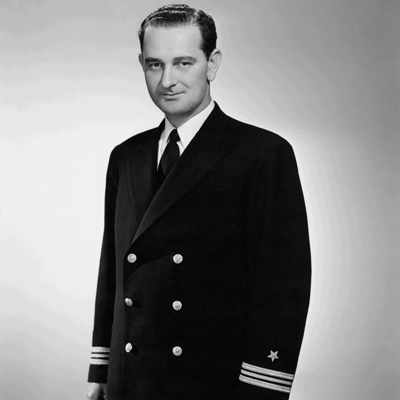
President Lyndon B. Johnson’s Military Service
On June 21, 1940, Lyndon Johnson was appointed Lieutenant Commander in the U.S. Naval Reserve (USNR). Reporting for active duty on Dec. 10, 1941, three days after Pearl Harbor, he was ordered to the Office of the Chief of Naval Operations, Navy Department, Washington, D.C., for instruction. He began working on production and manpower problems that were slowing the production of ships and planes, and he traveled in Texas, California, and Washington, assessing labor needs in war production plants. In May 1942, he proceeded to headquarters, Twelfth Naval District, San Francisco, California, for inspection duty in the pacific. Stationed in New Zealand and Australia, he participated as an observer on a number of bomber missions in the South Pacific. He was awarded the Army Silver Star Medal by General Douglas MacArthur and it was cited as follows:
For gallantry in action in the vicinity of Port Moresby and Salamaua, New Guinea, on June 9, 1942. While on a mission of obtaining information in the Southwest Pacific area, Lieutenant Commander Johnson, in order to obtain personal knowledge of combat conditions, volunteered as an observer on a hazardous aerial combat mission over hostile positions in New Guinea. As our planes neared the target area they were intercepted by eight hostile fighters. When, at this time, the plane in which Lieutenant Commander Johnson was an observer, developed mechanical trouble and was forced to turn back alone, presenting a favorable target to the enemy fighters, he evidenced marked coolness in spite of the hazards involved. His gallant actions enabled him to obtain and return with valuable information.
In addition to the Army Silver Star Medal, Commander Johnson has the Asiatic-Pacific Campaign Medal and the World War II Victory Medal.
On July 16, 1942, Johnson was released from active duty under honorable conditions. (President Roosevelt had ruled that national legislators might not serve in the armed forces). On Oct. 19, 1949, he was promoted to Commander, USNR, his date of rank, June 1, 1948. His resignation from the Naval Reserve was accepted by the Secretary of the Navy, effective Jan. 18, 1964.